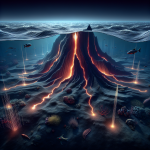Tonga Earthquake 7.1: Major Quake Strikes Southeast Region
Summary
A powerful magnitude 7.1 earthquake struck the southeast region of Tonga, shaking the island nation and prompting regional seismic alerts late into the evening. According to the US Geological Survey (USGS), the epicenter was located at a depth that significantly influenced surface-level shaking across the islands, though fortunately, a widespread tsunami warning was not issued.
Emergency authorities on the ground reported minimal structural damage in the capital, Nukuʻalofa, but smaller island communities are now being assessed for their level of impact. Residents were advised to remain on alert and follow official updates due to the potential for aftershocks in the coming days.
The earthquake originated in a tectonically active area known as the Pacific Ring of Fire, notorious for frequent seismic events due to major tectonic plate movement. Relief agencies are currently coordinating with local governments to assess any humanitarian needs that may emerge.
No casualties have been confirmed, though communications with outlying areas remain limited. Tonga’s Ministry of Meteorology and Disaster Management has issued a public advisory encouraging preparedness and caution moving forward. The government continues to monitor the situation closely along with international seismic agencies.
This latest tremor serves as a reminder of the island nation’s vulnerability to natural disasters, particularly earthquakes and tsunamis.
Analysis
Navigating a Rise in Seismic Activity Across the Pacific
Experts across the globe are closely watching Tonga as part of a broader uptick in seismic activity throughout the Pacific region. The 7.1 magnitude earthquake is the most recent in a series of moderate to strong tremors largely clustered along the Pacific Ring of Fire — a major seismic belt that spans from New Zealand to South America.
Seismologists attribute this increase in quake frequency to intensified interactions between the Pacific and Indo-Australian tectonic plates. According to Dr. Fareed Katoa, a geologist with the University of the South Pacific:
This earthquake, while not the strongest we’ve seen, is significant because it highlights the increasing instability in the region’s subduction zones.
Dr. Fareed Katoa
As climate volatility continues to place additional stress on vulnerable regions, experts are urging Pacific island nations to invest further in early-warning systems and community education programs on how to respond to seismic threats.
Tonga’s Emergency Infrastructure: Ready or Fragile?
Despite facing frequent storms and quakes, Tonga has made impressive strides in disaster preparedness. Over the past five years, it has upgraded its seismic monitoring capabilities and community warning systems with the help of international organizations.
- The Pacific Tsunami Warning Center (PTWC) now feeds real-time data to Tongan emergency services for rapid response decisions.
- Earthquake-resistant design standards have been introduced in public building codes.
- Community drills and risk education are conducted semi-annually in coastal villages.
However, experts acknowledge that these measures are not foolproof. Island chains like Haʻapai and Vavaʻu can remain isolated after disasters due to damaged undersea cables and limited airstrip access.
Preparedness must go hand in hand with access — an effective early warning system doesn’t help if remote communities can’t act on it in time.
Rachel Aiono, Pacific Disaster Resilience Network
Looking Ahead: Building a Climate-Resilient Pacific
As Tonga continues its recovery and monitoring, global stakeholders are calling for more resilient infrastructure investment in small island nations. The intersection of natural disasters and climate change requires a proactive rather than reactive approach.
Predictions for the region suggest a continued risk of moderate to high seismic activity in the next 6 to 12 months. USGS has also indicated the likelihood of aftershocks in southeastern Tonga. While these may be less severe, they can still pose risks, especially to already-affected infrastructure.
With investor interest in climate-resilient technologies growing, now is the time for Tonga and similar nations to partner with international development banks and tech innovators. As the region looks to the future, it must weigh preparedness with innovation.













